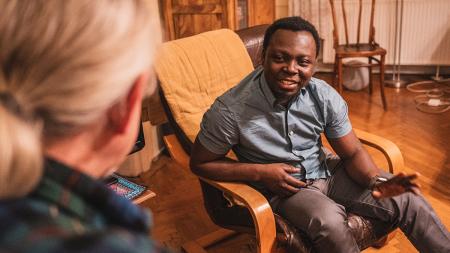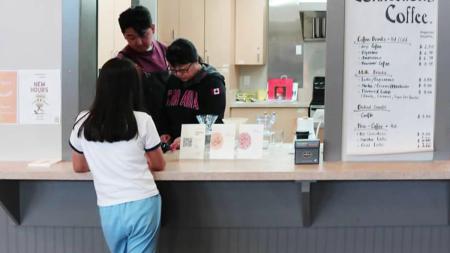Pokémon Is a Go at Many Churches

Pokémon Go players outside Monroe Community Church.
Steve Fridsma
Gazing intently at their smart phones, dozens of people have wandered into the parking lot of Monroe Community Church in Grand Rapids, Mich., on recent Saturday evenings.
They were playing the popular augmented reality game called Pokémon Go and were drawn there because they could find and capture such characters as Drowzee, Onix, Nidoran, Bellsprout, Koffing, and Pinsir, which were hovering in the area.
“Meeting these players has been a delightful experience for us,” said Steve Fridsma, who leads the art team and is involved in worship and music ministries at Monroe. His wife, Mary, is Monroe’s children's pastor.
“As our family got to know this game, we learned that many churches are places where the players can congregate and play.”
Players of the game use their smart phone’s GPS to locate where they are, which makes a Pokémon character appear on their screens. Using their phone’s camera, they are then drawn to certain landmark locations — and many of these include churches — to compete.
Other locations include cemeteries, libraries, monuments, and municipal buildings. These locations are called Poké Stops at which there are Poké Gyms, where players seek to capture some of the 151 virtual characters.
Following the lead of many churches across North America and abroad, Monroe members realized that being a Poké Stop and a Poké Gym presented an opportunity to connect with players, many of whom are of the millennial generation, and to offer information about their church.
“When we realized that people were showing up in the parking lot, we thought it would be cool to give away soda, water, candy, and chocolate as a way to meet our neighbors. We also decided to offer a charging station for phones,” said Fridsma.
On the two Saturday evenings they have been out there, he said, they have mingled and spoken with about 100 people who have been playing the game.
“We have met new neighbors, many of whom live in the surrounding apartments and condos. Several hung out for more than an hour,” said Fridsma.
They have also met people who have come to Grand Rapids from smaller communities that have fewer stops and gym locations.
“We have had great conversations, and there have been a lot of questions about our church. We have also seen a couple of people come back for the service on Sunday,” said Fridsma.
Since its release in early July, the game has attracted millions of users who can now be seen in cities nearly everywhere walking along and playing the game.
Stephen van Breda, youth pastor at Exeter CRC in Exeter, Ont., said his church is on the outskirts of town and is not on a Poké Stop.
But he and his children have gone on "Pokémon Walks" around their area.
“We've run into lots of other children and teens doing the same. It's a neat connection,” he said.
Locally, he is aware of two churches to which players are drawn on this virtual scavenger hunt.
“As far as I know, these churches haven't done anything to encourage or discourage the kids now hanging out there, but it seems like a pretty good opportunity.”
In Houston, Tex., Peace CRC has put out a sign welcoming Pokémon Go players and has offered water bottles. At New Westminster CRC in Burnaby, B.C., Rev. Andrew Beunk recently spoke about the phenomenon in his sermon.
“I connected Pokémon Go to prayer as part of my introduction to a sermon on the third petition of the Lord's Prayer,” said Beunk.
The game is like prayer in that “it causes the material world to intersect with a virtual world, and prayer is God's gift to us of expressing and experiencing the intersection of the material world with the kingdom of God and heaven,” he said.
At the end of his sermon, Beunk used a different analogy.
“I invited the congregation to consider themselves, in the way we live our lives, to be like an app [a software application commonly used on smartphones] — that is, people who display the intersection of the kingdom of God with our everyday world,” he said.


